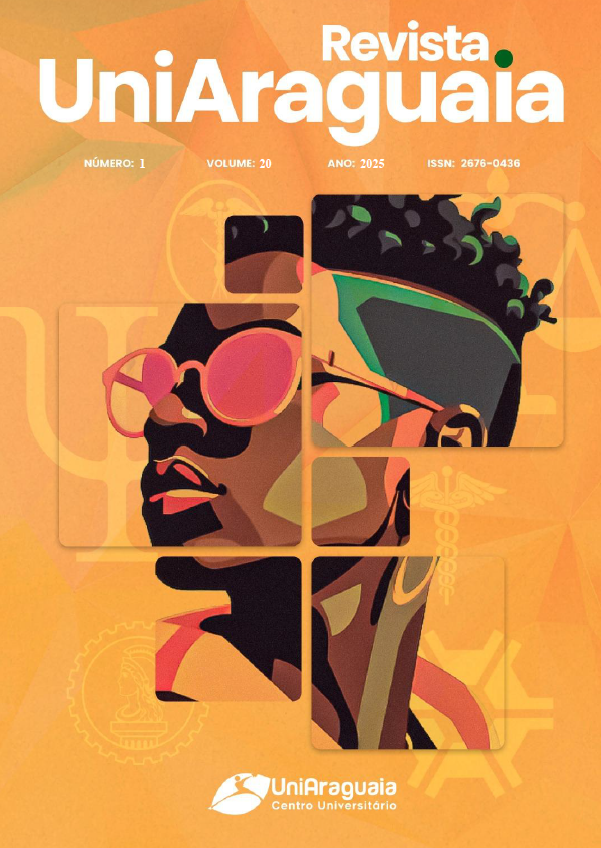RISCO DA TRÍADE DA MULHER ATLETA EM CORREDORAS E SUA RELAÇÃO COM CONSUMO ALIMENTAR DE ACORDO COM A CLASSIFICAÇÃO NOVA
Keywords:
síndrome da tríada da mulher atleta, consumo alimentar, alimentos industrializadosAbstract
A prática de exercício físico, quando associada a um desequilíbrio entre ingestão e gasto calórico, pode desencadear a Tríade da Mulher Atleta: uma síndrome caracterizada por baixa disponibilidade energética, disfunção menstrual e densidade mineral óssea reduzida. A falta de estudos que avaliem a qualidade da dieta das mulheres nessa condição dificulta o entendimento sobre como a alimentação está relacionada com a Tríade. Portanto, o presente estudo tem como objetivo relacionar o risco da Tríade em corredoras com o consumo alimentar segundo a classificação NOVA. Trata-se de um estudo transversal realizado com 7 atletas do sexo feminino com idade entre 18 e 39 anos. Foram coletados dados antropométricos e dietéticos, e o risco da Tríade foi avaliado pelo Questionário LEAF-Q. As mulheres com risco da Tríade representaram 28,5% da amostra e apresentaram menor massa corporal, IMC, percentual de gordura e maior volume de treinamento. O risco da Tríade foi relacionado com uma ingestão proteica excessiva, um menor aporte de carboidratos e maior consumo de fibras. Também foi observado um maior consumo de alimentos in natura, minimamente processados, ingredientes culinários e ultraprocessados nas atletas com risco. Os resultados evidenciam uma falta de conscientização sobre escolhas alimentares saudáveis neste grupo, além de possivelmente apontarem um padrão de alimentação em comum entre mulheres com risco da Tríade. Portanto, práticas de intervenção multidisciplinares para estabelecer um quadro de saúde adequado para as atletas, além de condutas que garantam prevenção, promoção e tratamento dessa condição são necessárias.
Downloads
Published
Issue
Section
License

This work is licensed under a Creative Commons Attribution 4.0 International License.
The copyright of the published articles will be transferred to the Uniaaraguaia Magazine, allowing its subsequent reproduction as transcription and with due citation of source. In the event of acceptance and before the publication of the article, the plaintiff (s) shall write a statement formally transferring copyright to the magazine.
The author may also print and distribute copies of his article, provided that he mentions that the rights belong to the Uniaaraguaia Magazine.
Author rights include the right to reproduce in full or partly by any means, distribute this article, including figures and photographs.
By submitting originals to the Uniaaraguaia magazine, the author or authors express agreement with the following terms:
a) Authors maintain copyright and grant Uniaraguaia magazine the right of first publication, with the work simultaneously licensed under the Creative Commons Attribution license that allows the sharing of work with recognition of the authorship and initial publication in this magazine.
b) Authors are authorized to assume additional contracts separately, for non-expiration distribution of the work version published in this magazine (eg publish in institutional repository or as book chapter), with recognition of authorship and initial publication in this journal.
c) Authors are allowed and are encouraged to publish and distribute their work online (eg in institutional repositories or on their personal page) to any point before or during the editorial process, as this can generate productive changes as well as increase the impact and citation of published work.

